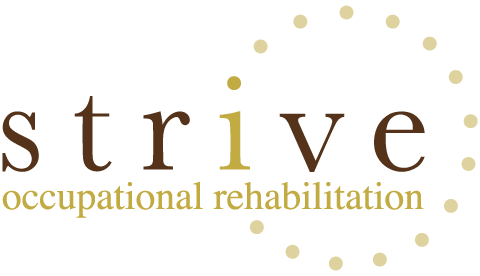In today’s fast-paced world, many of us spend a significant portion of our day working at desks, often hunched over computers or paperwork. This sedentary lifestyle can take a toll on our physical health if we don’t pay attention to the ergonomics of our office setup. As an occupational rehabilitation provider, we can help shed light on the importance of office ergonomics and provide you with some valuable tips to create a comfortable and healthy workspace, which in turn can improve your team’s productivity!
What is Ergonomics?
Ergonomics is the science of designing and arranging objects in our environment to fit our physical capabilities and limitations. In the context of the office, it means optimizing the workspace to prevent discomfort and injuries associated with prolonged sitting and repetitive tasks.
- Chair and Desk Arrangement
Begin with your chair and desk setup. Your chair should provide good lumbar support and allow your feet to rest flat on the floor or on a footrest. Your desk should be at a height that allows your forearms to be parallel to the ground when typing, and your monitor should be at eye level to prevent neck strain.
- Proper Posture
Maintaining proper posture is crucial. Sit back in your chair with your back against the lumbar support, and ensure that your spine is in a neutral, S-shaped curve. Avoid slouching or leaning forward. Your feet should be flat on the floor, knees at a 90-degree angle, and elbows close to your body.
- Monitor Placement
As mentioned earlier, your monitor should be at eye level. This reduces the strain on your neck and encourages you to maintain an upright posture. Consider using a monitor stand or laptop riser if necessary. If you were bifocal glasses, you may need to position your monitor slightly lower pending on which part of your glasses you use for screen work.
- Keyboard and Mouse Position
Position your keyboard and mouse so that your wrists are in a neutral position. Avoid excessive bending or stretching of your wrists, which can lead to conditions like carpal tunnel syndrome. An an ergonomic keyboard and mouse may be beneficial.
- Take Regular Breaks
Sitting for prolonged periods can lead to musculoskeletal issues and decreased productivity. Aim to stand up, stretch, and walk around for a few minutes every hour. Set a timer or use apps to remind yourself to take breaks.
- Use Ergonomic Accessories
Invest in ergonomic accessories such as an ergonomic chair, an adjustable desk, a keyboard tray, or an ergonomic mouse and keyboard. These tools are designed to support your body’s natural alignment and reduce the risk of discomfort and injuries.
In summary, office ergonomics is a critical aspect of maintaining your physical health and well-being while working in a desk-bound job. By making small adjustments to your workspace and adopting healthy habits, you can prevent the development of musculoskeletal issues and promote overall productivity and comfort. As an occupational rehabilitation provider we would encourage you to prioritize your well-being and create an ergonomic office setup that supports your body’s needs. Your future self will thank you for it!

 Sharon Darmody – finalist for Australian Women’s Small Business Champion Awards 2023
Sharon Darmody – finalist for Australian Women’s Small Business Champion Awards 2023